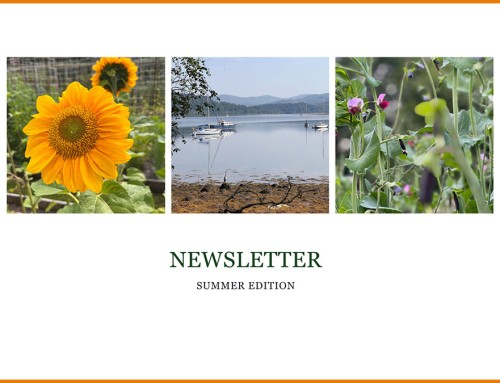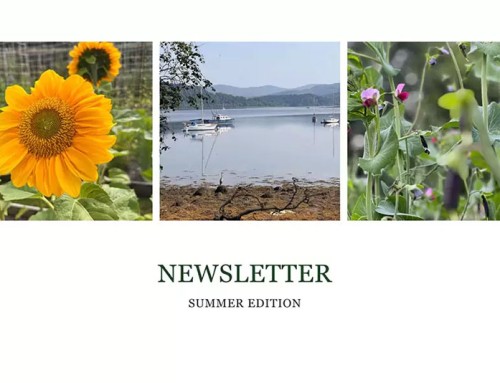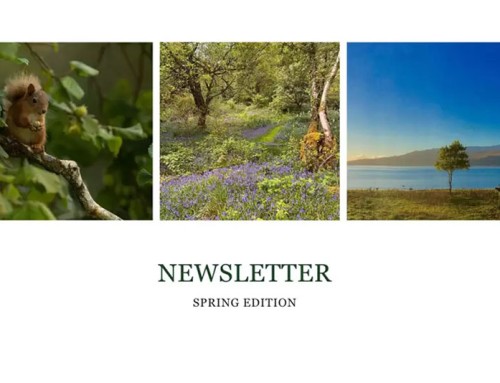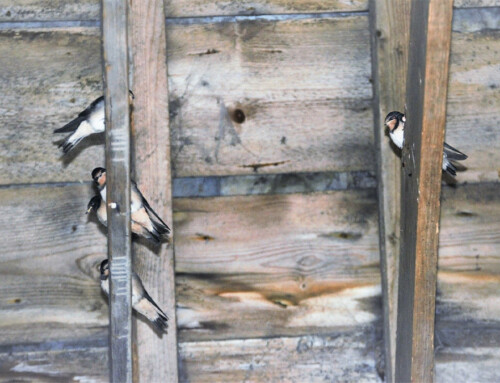
Welcome to the Ardtornish Newsletter
Welcome to our spring newsletter. The team at Ardtornish has put together a good summary of what’s been happening here, below. As you can tell from what follows, it’s been a very busy time. At any one time we usually have several contractors and their teams on site, besides our own in-house staff, who remain around twenty in number.
In the last twelve months we’ve sold some land at Ardtornish – a strip at the far north of the estate (adjacent to Glencripesdale, Laudale and Kingairloch) to a private buyer, enabling us to restructure the company; and in the village, Knock Park – the Morvern community’s sports field – to the very active local games committee. We’ve created more woodland, and started a long-term project (with funding very gratefully received from NatureScot) to restore the catchment of the river Aline. More on both follow.
We’re also planning long-term work on Ardtornish House, guided by our excellent new architect Jonathan Gotelee. Work on the roof is a priority. Since the last major roof renewal project, in the 1980s, weather patterns have changed. Jonathan advises we can now expect double, or possibly even more, the historic maximum rainfall in extreme downpours, so the capacity of the roof to shed water that has sufficed for over 100 years will need to be expanded. That could be a lot of work.
We’re very pleased to be working in partnership with CAOLAS, the local marine community interest group, on a long-term study of the condition of Loch Aline. The River Aline restoration project includes a budget for expanding their native oyster reintroduction programme, and between us we’ve deployed a slight underspend elsewhere to help them buy their first workboat.
I’ll finish with a suggestion: when you’re here, please do consider using our still-newish farm shop. John Turner is doing a remarkable job in both gardens, and we should have a good supply of home-grown vegetables and fruit this season. The farm team produces excellent meat, and Kat and Kenny have worked hard making our delicious frozen ready meals. Give us a few days’ notice please, and a lot of your groceries can be provided for your visit in your accommodation with the absolute minimum of food miles.
Hugh Raven
Spring News from the Operations Manager
Kat Mclaughlin
The first quarter has seen our general maintenance team achieve so much since returning from their well-earned winter break.
At West Pier House the next few weeks will see our attention turn to the exterior, including the roof. Once complete and the appropriate paperwork is filed, it will be added to our holiday-let portfolio. This is the view from the window.

Expansion of the tourism enterprise will then pause so we can invest instead in our staff properties.
First will be Craigbhea 1 & 2, both currently vacant. Set among the trees and next to the original hydro dam, this former factor’s residence was reconfigured into two houses. Over the years they have served as both staff accommodation and long lease holiday-lets. Both are being upgraded to once more become home for future staff appointments.
We are delighted that the old and very rickety footbridge that spanned the River Rannoch has been replaced. The design and level of engineering is incredible, and we plan to host a small exhibition in the boiler house gallery later in the year – showcasing all aspects of the project from initial design concept and inspiration, scale models, drone footage and photography to a time lapse video of the build and installation.

The Kitchen Garden wall that was demolished due to safety concerns in summer 2022 and will be rebuilt this year. Phase 1 – ‘mass fill footings’ – is complete and Phase 2, creation of padstones to support steel columns, will commence early Summer.
The road to Old Ardtornish is being upgraded, with potholes and other irregularities fixed before surface dressing with stone chippings and then graded to direct the water away from the road.
As our project ambitions grow, so must our headcount. With this in-mind, we will soon be recruiting for an extra pair of semi-skilled hands to join our dedicated works team.
Tourism
Hannah Collins
Reflecting back on the past four months and my introduction to life on the Ardtornish team, it is quite amazing to consider how much is achieved here during the winter months. For me, the last quarter has involved total immersion into the nitty gritty of Ardtornish hospitality – getting to know the individual character of our properties and learning what this place means to so many of our visitors. Now the season is on us I hope to be able to give our guests as warm a welcome as I myself have received here.
Winter Upgrades
Housekeeping have been busy attending to the annual refresh of our self-catering properties, with the welcome addition of two new seasonal team members, George and Keely. It has been a pleasure to hear feedback from guests and family members to say that, with the brass polished and the chandeliers gleaming, Ardtornish House is looking the best it has in some time.
The trades teams have been equally productive of late; the living room in Castle Cottage 1 has had a facelift, the bunkroom and living room in Castle Cottage 2 have been refreshed and along with the installation of new French Doors out onto the patio, The Boat House is now boasting a sleek, modern kitchen.

With everything looking so fresh, I thought this would be the perfect time to showcase the cottages and having employed the services of a local photographer, I am happy to say we will have a new, complete portfolio of images to share in a few weeks’ time.
Small changes that make a big difference
Along with the bigger changes in the properties come some smaller but equally important ones. Guests and residents will now be able to recycle food waste in compost bins. Now we have the newly installed Rocket Composter up and running, the compost will be used in The Kitchen Garden to help productivity. It will be a win-win situation come summer when the seasonal veg boxes are ready for ordering.
By the end of this month, Starlink will be installed in all of our holiday accommodation, giving guests access to super-fast Wi-Fi.
Events
Ardtornish House was alive with various events throughout March, rounded off by the delivery of our first 2024 wedding, which was wonderful. Plans for the upcoming months include our annual piano retreat and birthday ceilidhs as well as the launch of a brand-new health retreat later in the year. Big events take some organisation but it is a gratifying feeling when the house is full of folk making memories.
I imagine the coming four months are going to look very different from the last as the place comes alive with more guests and visitors. I look forward to meeting you when you get here!
COMING SOON – ‘Naturally Restorative’; A brand new Yoga and Health Retreat at Ardtornish House
November 2024 will see the launch of what we hope to be the first of many Yoga and Health Retreats at Ardtornish. Two knowledgeable local teachers will deliver a programme of yoga, massage and spiritual alongside a fully-catered 4-night stay in Ardtornish House. Full details will be released via e-mail on Monday 1st May, giving our subscribers the first opportunity to book a spot. If this sounds like your cup of tea, be sure to join our mailing list over the next week or so.

All about Energy
Kyle Smith
When most people think of a hydropower scheme, they think of the power house, turbine and generator, and while these are where water power is converted to electrical energy, there is also a whole system of intakes, pipework, electrical cables and communication systems enabling a hydropower scheme to operate efficiently. Work this past quarter has focussed on these ancillary systems, including maintenance of the High Voltage distribution system, completion of the Rannoch intake cleaner, and improvements to the Socaich leat and the Tearnait intake cleaner.
During this past quarter we have also transferred the energy operations to Glen Hydro – a specialist consultancy based in Blairgowrie. Glen Hydro designed and currently operate the community-owned Barr hydroscheme near Lochaline and have provided Ardtornish with valuable analysis on the potential issues affecting the 295kW Socaich scheme. You’ll likely see more of Glen Hydro over the coming months as they settle into their new role.
Although I will no longer be involved in the day-to-day energy operations at Ardtornish, I look forward to continuing to support the team with Energy Mutual’s energy monitoring and management software. Ardtornish was our first client to use the monitoring platform and we have since continued to improve and grow the software and its app, which now provides useful insights to several organisations throughout Scotland.
I would like to thank everyone at Ardtornish who has supported me and the energy business over the years, with advice and an extra set of hands when help was needed!
Kenny’s Ben Nevis Challenge
Kenny McLaughlin
The Highlands of Scotland are one of the most popular tourist destinations in the United Kingdom for homegrown holiday makers, as well as those choosing to visit from abroad.
Steeped in history, with spectacular views at every turn, haunting mountains beckoning you towards them and golden beaches stretching endlessly along the coastline, it’s understandable why so many are drawn back here year after year.
But for many, living in the highlands brings challenges that not everyone considers.
Isolated, cut off, alone, with financial stability not always a certainty, many find themselves living a life of despair.
In 2022 there were a suspected 762 probable suicides across Scotland, with the Highland region accounting for 52, an increase from 2021 and a figure that had the Highlands at a higher rate than the Scottish average.
The Samaritans, in 2021/22, had around 22,000 volunteers, one of whom answered a call for help every 10 seconds; quite a staggering number. In 2022/23 there wasn’t a single second when a volunteer from the Samaritans wasn’t on the phone to someone, day and night. Samaritans are there for people when they need them most. This brilliant service all costs money; for every £1 donated to Samaritans and its branches in the UK and Ireland, 80p goes on their services and just 20p is invested in raising the next £1. To give you an idea of how much it costs to run: £10 will cover the cost of two calls to the Samaritans helpline from people struggling to cope, £96 could train and support an existing Samaritans volunteer for a whole year and a donation of £500 could keep their phone lines open for one hour.
So that, along with a personal desire to make a lifestyle change is where I started, and why I chose the challenge of climbing Ben Nevis three times in 24 hours (this May).
An iconic feature in the Highlands, it’s known by everyone that visits the area. So, I thought, what better way to raise money than by challenging myself to climb the equivalent of Mount Fuji – over 12,300 feet in one day!
Having sat on my backside for the past few years, training most definitely started slowly. 5am starts every morning throughout November steadily saw my fitness levels increase. By January, I was climbing the Corbetts of Ardgour. Next on the training schedule was to start on the Munros. Now I didn’t need a different one each time, I just needed one that was relatively steep from the start, as well as close enough to home that I could get access quite quickly on my days off. This is where CalMac stepped forward and very generously offered to pay my ferry costs to and from Mull, giving me the opportunity to climb Ben More a few times a month for the final couple of months leading up to my challenge in May.
Friends and family have all been incredibly supportive in offering sponsorship. As have my own work, Ardtornish, who have made a sizeable contribution to my JustGiving page. Even the current football champions of Europe, Manchester City, donated a signed Jack Grealish shirt which subsequently raised £235.
So, all in all things have been going really well and I’m now into the final two months’ training, for such a worthwhile cause.
If anyone would like to make a donation, you can just head to the JustGiving website, and search for ‘Kenny McLaughlin’ where you’ll find my appeal page, or click the link below

A Gardener’s World
John Turner
Spring is finally here at Ardtornish. After a typical West Coast winter, thought by many to be a ‘quiet time’ for gardeners, I can confirm it is anything but! A lot has changed since the last newsletter.
A great deal of work has been undertaken in the main garden. The area around Ardtornish House has had a large amount of pruning, clearing, and tidying, now exposing the rockery on the main lawn and the bank above the driveway as you come in. This bank had what appeared to be narrow steps leading up from the garden, but has now shocked everyone with the revelation of original Victorian stonework.
Leading along Keepers Path, another large swathe has been cleared. This has opened vistas along enticing you through the gardens. Decades of natural regeneration, brambles and leaf mould were removed, opening up the borders, drainage ditches and burns as well as the Victorian box drains that run under the paths. Several new boardwalks have been replaced, removing unnecessary steps to create a more enjoyable walk. Now these areas are clear, a carpet of Bluebells is emerging from a long slumber. Although the flowers are not out yet as I write, they will provide a sea of colour shortly.
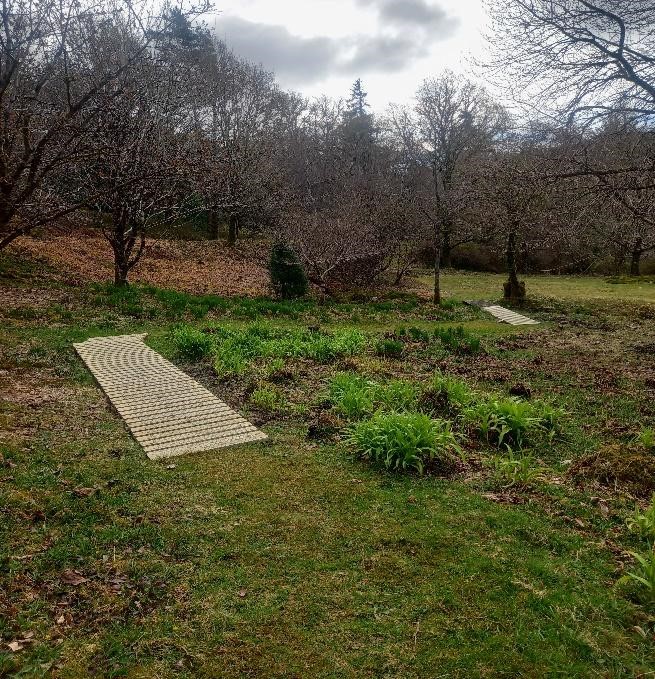
Drainage has also been on the winter agenda. Many of the drains are old and in need of maintenance, with a lot being blocked. By getting the water flowing once more, we will be able to improve the gardens, restoring the footpaths, lawns, and borders. The regulars to Ardtornish will be familiar with Skunk Cabbage which produces a fantastic yellow flower early in the year, plus a pungent aroma. They are an invasive species that we are tackling. By improving our drainage we can limit their water supply, cutting them down regularly and beginning to weaken them. This is a mammoth task, but a vital one to limit its spread.

The team of seasonal workers and our volunteers have contributed invaluably to the recent transformations. They were out in all weathers, all winter, yet unfortunately will not be here to see and appreciate the fruits of their labour. Pops of colour are showing across the garden, from the Rhododendrons to Azaleas, Camellias to Daphne and the Daffodils, along with the first cut of the Main lawn.
While my focus was in the Main Garden this winter, it was far from quiet over in the Kitchen Garden. I have been busy in the propagation tunnel, sometimes with my little helpers coming expectantly to see the signs of new life. The soil temperature is finally beginning to increase, along with the levels of daylight, so my focus is shifting back somewhat.
My first growing season was a success in producing vegetables for our Veg box scheme and Farm shop, while opening the overgrown growing areas. This year I will continue to build on last year’s success, continuing to clear and open more of the site while increasing food production.
I look forward to seeing you here this year!
Farm
William Hawes
We’ve welcomed our first calves of the season and Morvern having avoided the worst of the UK’s wet weather over the last month, the fields have had a much-needed chance to dry out, allowing us to make progress with our field work: repairing drains, fences and applying lime to balance the soil’s acidity, increase earthworm activity and in turn improving the soil structure.
The way we manage our grazing is changing. Thanks to NatureScot, and our successful bid to their Nature Restoration Fund grant scheme, for our Aline catchment restoration project, we’ve bought GPS collars for the cattle herd. The collars allow us to create virtual fences, and so be much more strategic about where animals graze and for how long, including in some of our ecologically important woodlands.
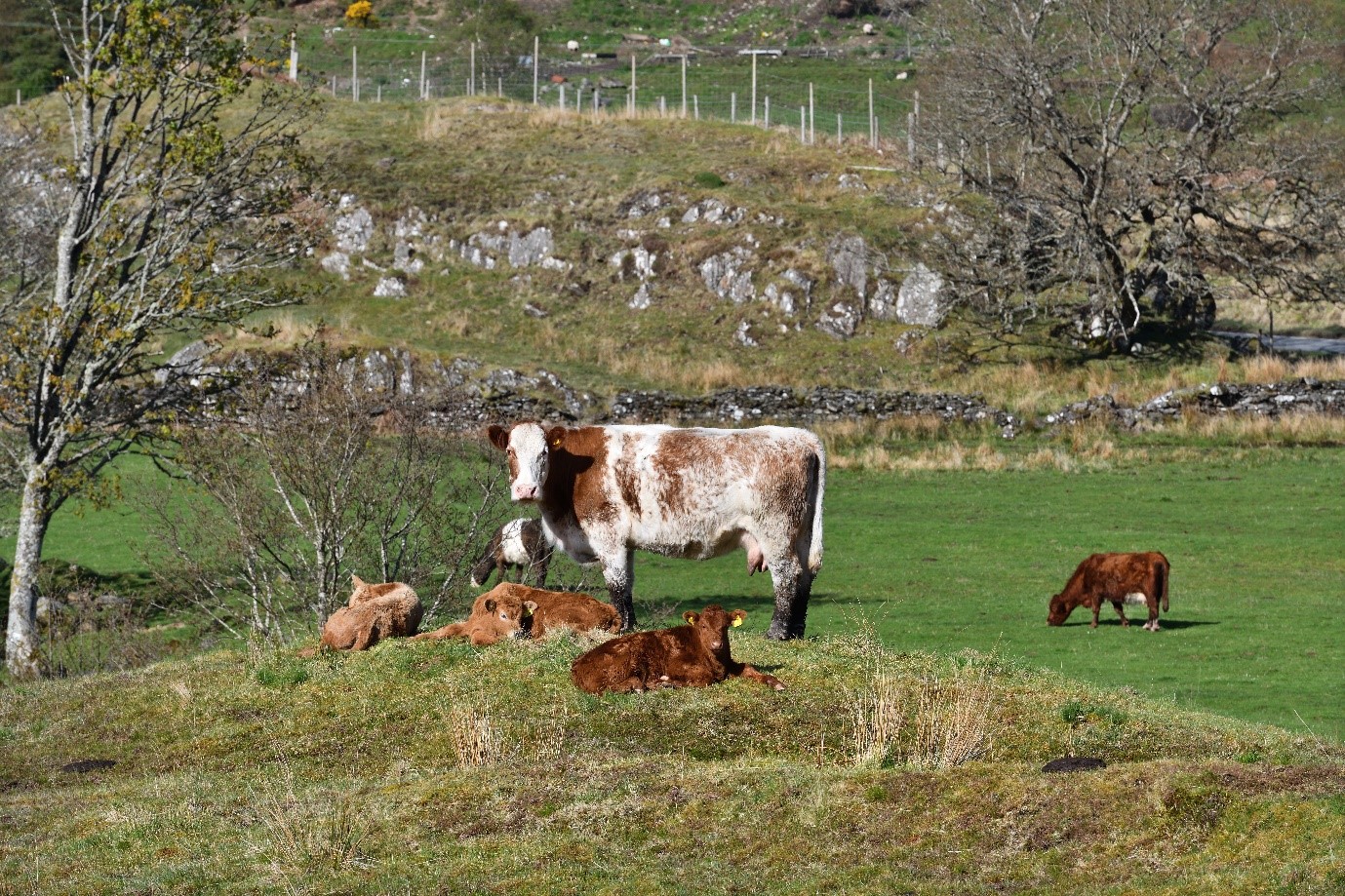
If cattle spend too long in one area, they poach it; trampling the ground repeatedly until grass and vegetation cover is removed and what’s left is mud. Poaching makes the land more susceptible to run-off and erosion and can lead to the collapse of banks, especially during periods of wet weather. In our terrain, and the cost and resource of erecting and maintaining hill fences, it’s always been a challenge to balance ecology, animal welfare and production. The GPS collars are a game changer!
We’re working on creating a conservation grazing plan which, by using the collars, will allow us to manage the cattle so that their grazing improves a range of habitats across Ardtornish. Cattle use their tongues to twist around longer vegetation and pull, which can help to open up the sward. Their large mouths also mean they are non-selective grazers and will just munch away as they move through the grassland, often leaving areas of longer, coarse grasses, to create a more diverse structure. We hope that wildlife will thrive as we use our livestock to create more diverse habitats.
Woodlands
William Hawes
We’ve got ambitious plans to expand native woodland at Ardtornish by 600ha! The woodland will be created via a combination of planting, and natural regeneration of trees; seed stock produced by existing woodlands that’ll be able to succeed once herbivore pressure is removed.
The next phase of the programme is currently being designed. It’ll comprise three new compartments, totalling around 150ha of woodland.
Two of the compartments will form part of the Aline restoration project area, providing links in the strategic fence line that’ll exclude sheep and deer from just under 1,000ha in the White Glen.
Ardtornish is in the UK’s hyper-oceanic zone, where high levels of rainfall and relatively mild, year-round temperatures provide just the right conditions for some of the world’s rarest bryophytes and lichens. Woodlands that have the right characteristics are classified as temperate rainforests, a globally unique habitat.
While there is approximately 93,000ha of semi-natural woodland in Scotland’s rainforest (hyperoceanic) zone, less than one third contains rainforest biodiversity. Ardtornish is lucky to have some of the best remnants of these magical areas and we’re working with the Alliance for Scotland’s rainforest to design the new woodlands to help and expand rainforest cover in the future and connect the fragments that Morvern’s clung onto.

